Laura Poitras
description: an American documentary film director, known for her work on surveillance, privacy, and national security issues
43 results

Snowden's Box: Trust in the Age of Surveillance
by
Jessica Bruder
and
Dale Maharidge
Published 29 Mar 2020
p. 15 “no credible evidence”: Jamie Williams and Karen Gullo, “Government Documents Show FBI Cleared Filmmaker Laura Poitras after Six-Year Fishing Expedition,” Electronic Frontier Foundation, December 6, 2017, Eff.org. p. 16 she offered to write with crayons: Peter Maass, “How Laura Poitras Helped Snowden Spill His Secrets,” New York Times Magazine, August 18, 2013. Substantiated in interviews with Laura Poitras. p. 17 Salon ran an article: Glenn Greenwald, “US Filmmaker Repeatedly Detained at Border,” Salon, April, 8, 2012. p. 18 Laura was editing The Program: Laura Poitras, “The Program,” New York Times Op-Docs, video, Nytimes.com; Paul Harris, “US Data Whistleblower: ‘It’s a Violation of Everybody’s Constitutional Rights,’” Guardian, September 15, 2012.
…
That’s what the mysterious source did when he contacted Greenwald, and once again when he decided to try Micah instead. When Micah got the source’s request, he sent Laura an encrypted version of the following message: From: Micah Lee To: Laura Poitras Date: Sat, 12 Jan 2013 Hey Laura, This person just sent me this GPG encrypted email. Do you want to respond? If you want to, and you need any help with using crypto, I’m happy to help. Laura wrote back: From: Laura Poitras To: Micah Lee Date: Sat, 12 Jan 2013 Hey Micah, Thanks for asking. Sure, you can tell this person I can be reached with GPG at: XXXXX@gmail.com I’ll reply with my public key.
…
We conducted interviews from 2016 to 2019 with Barton Gellman, Micah Lee, Kirsten Johnson, Laura Poitras, Trevor Timm, Ben Wizner, and confidential sources. Foreword p. 2 The cover of the Guardian bore a giant yellow headline: Julian Borger and Glenn Greenwald, “The Whistleblower” Guardian, October 6, 2013. p. 2 Snowden’s trademark eyeglasses: James Bamford, “The Most Wanted Man In The World,” Wired, September 2014. p. 2 an existential threat to democracy: Glenn Greenwald, Ewen MacAskill, and Laura Poitras, “Edward Snowden: The Whistleblower behind the NSA Surveillance Revelations,” Guardian, June 9, 2013.

Dark Mirror: Edward Snowden and the Surveillance State
by
Barton Gellman
Published 20 May 2020
The film’s broadcast premiere was October 25, 2006, on the Public Broadcasting Service. See www.pbs.org/pov/mycountry/. For the 2007 Academy Award nomination, see https://to.pbs.org/1QJZkGk. failed attempt to install democracy: “Interview: Laura Poitras, Director of ‘My Country, My Country,’” Indiewire, July 31, 2006, www.indiewire.com/article/indiewire_interview_laura_poitras_director_of_my_country_my_country. her latest, The Oath: See Zeitgeist Films, press kit, 2010, https://zeitgeistfilms.com/media/films/182/oath.presskit.pdf. pulled aside for interrogation and search: This account, which Poitras gave to me at the time, has not been disputed by the U.S. government.
…
Snowden is a complicated figure, far from the cartoon templates of “hero” or “traitor.” He can be fine company: funny and profane, an autodidact with a nimble mind and eclectic interests. He can also be stubborn, self-important, and a scold. Our relationship was fraught. He knew that I would not join his crusade, and he never relied on me to take his side as he did with Laura Poitras and Glenn Greenwald. We struggled over boundaries—mine as a journalist who wanted to know more, his as an advocate who saw his cause at stake in every choice of words. He broke ties with me, briefly, when I did not accept his conditions for my first story. The second time he withdrew, believing I had done him harm, we did not speak for months.
…
Not because we knew it was blown, but because we could not know. These email accounts were anonymous, encrypted, isolated from our everyday internet lives. Best I could tell, there was no way to lock them down tighter. That thought had reassured me once. It was the second half of May 2013. Nearly four months had passed since Laura Poitras, an independent filmmaker, reached out to me for advice about a confidential source. Verax, as I came to know him later, had brought her an enigmatic tip about U.S. government surveillance. Poitras and I teamed up to see what would come of it. The previous night, months of suspense had come to an end.

The Hacker and the State: Cyber Attacks and the New Normal of Geopolitics
by
Ben Buchanan
Published 25 Feb 2020
For a partial listing of the cables to which GCHQ has access, see “Cables: Where We Are,” UK Government Communications Headquarters, ca. 2012. This document was shared publicly in Frederick Obermaier, Henrik Moltke, Laura Poitras, and Jan Strozyk, “Snowden-Leaks: How Vodafone-Subsidiary Cable & Wireless Aided GCHQ’s Spying Efforts,” Süddeutsche Zeitung International, November 25, 2014. 16. Julia Angwin, Jeff Larson, Charlie Savage, James Risen, Henrik Moltke, and Laura Poitras, “NSA Spying Relies on AT&T’s ‘Extreme Willingness to Help,’ ” ProPublica, August 15, 2015. 17. Michelle Nichols, “United Nations Says It Will Contact United States over Spying Report,” Reuters, August 26, 2013. 18. “2011 Acquisition Plan—Communications,” United Nations Procurement Division, 2011, https://web.archive.org/web/20120108022955/http:/www.un.org/depts/ptd/2011plan_coms.htm. 19.
…
“Subject: NSA Intelligence Relationship with Saudi Arabia,” National Security Agency information paper, April 8, 2013, published online with Glenn Greenwald and Murtaza Hussain, “The NSA’s New Partner in Spying: Saudi Arabia’s Brutal State Police,” The Intercept, July 25, 2014. 56. Laura Poitras, Marcel Rosenbach, Fidelius Schmid, Holger Stark, and Johnathan Stock, “How the NSA Targets Germany and Europe,” Der Spiegel, July 1, 2013; Matthew M. Aid, “The CIA’s New Black Bag Is Digital,” Foreign Policy, July 17, 2013; Ewen MacAskill, Julian Borger, Nick Hopkins, Nick Davies, and James Ball, “Mastering the Internet: How GCHQ Set Out to Spy on the World Wide Web,” Guardian, June 21, 2013. 57. Jacob Appelbaum, Laura Poitras, Marcel Rosenbach, Christian Stöcker, Jörg Schindler, and Holger Stark, “Inside TAO: Documents Reveal Top NSA Hacking Unit,” Der Spiegel, December 20, 2013; “New Nuclear Sub Is Said to Have Special Eavesdropping Ability,” Associated Press, February 20, 2005. 58.
…
Mark Halperin and John Heilemann, “The Hunt for Pufferfish: A Double Down Excerpt,” Time, November 2, 2013. 6. Jens Gluesing, Laura Poitras, Marcel Rosenbach, and Holger Stark, “Fresh Leak on US Spying: NSA Accessed Mexican President’s Email,” Der Spiegel, October 20, 2013. For a broader look at the NSA’s activities against political targets, see Scott Wilson and Anne Gearan, “Obama Didn’t Know about Surveillance of U.S.-Allied World Leaders until Summer, Officials Say,” Washington Post, October 28, 2013. 7. Laura Poitras, Marcel Rosenbach, and Holger Stark, “ ‘A’ for Angela: GCHQ and NSA Targeted Private German Companies and Merkel,” Der Spiegel, March 29, 2014. 8.

Surveillance Valley: The Rise of the Military-Digital Complex
by
Yasha Levine
Published 6 Feb 2018
Fight for the Future, the hip, young Silicon Valley activist group, declared Tor to be “NSA-proof” and recommended that people use it every day. Laura Poitras, director of Citizen Four, the Academy Award–winning documentary on Edward Snowden, endorsed Tor as well. “When I was communicating with Snowden for several months before I met him in Hong Kong, we talked often about the Tor Network and it is something that actually he feels is vital for online privacy and defeating surveillance. It is our only tool to be able to do that,” she told an auditorium full of people at a hacker conference in Germany, a giant picture of Edward Snowden projected behind her on stage (Katina, “This Is What a Tor Supporter Looks Like: Laura Poitras,” Tor Project [blog], November 23, 2015, https://blog.torproject.org/blog/what-tor-supporter-looks-laura-poitras). 68.
…
Every year, Tor’s annual presentation—“The State of the Onion”—is the most well-attended event in the program. An audience of several thousand packs a massive auditorium to watch Tor developers and celebrity supporters talk about their fights against Internet surveillance. Last year, the stage featured Laura Poitras, the Academy Award–winning director of the Edward Snowden documentary, Citizen Four. In her speech, she held up Tor as a powerful antidote to America’s surveillance state. “When I was communicating with Snowden for several months before I met him in Hong Kong, we talked often about the Tor network, and it is something that actually he feels is vital for online privacy and to defeat surveillance.
…
He was a member of the Internet Freedom elite, championed by the American Civil Liberties Union and the Electronic Frontier Foundation, given a board seat on eBay founder Pierre Omidyar’s Freedom of the Press Foundation, and occupied an advisory role for London’s Centre for Investigative Journalism. His fame and rebel status only made his job as Tor’s pitchman more effective. In Berlin, Appelbaum caught another lucky break for the Tor Project. In 2013, his good friend and sometimes-lover Laura Poitras, an American documentary filmmaker who also lived in the German capital in self-imposed exile, was contacted by a mysterious source who told her he had access to the crown jewels of the National Security Agency: documents that would blow America’s surveillance apparatus wide open.107 Poitras tapped Appelbaum’s knowledge of Internet systems to come up with a list of questions to vet the possible leaker and to make sure he really was the NSA technician he claimed to be.

Data and Goliath: The Hidden Battles to Collect Your Data and Control Your World
by
Bruce Schneier
Published 2 Mar 2015
US National Security Agency (8 Jan 2007), “XKEYSCORE (training slides),” https://www.eff.org/document/2013-07-31-guard-xkeyscore-training-slides (page 2). One called MARINA: James Ball (30 Sep 2013), “NSA stores metadata of millions of web users for up to a year, secret files show,” Guardian, http://www.theguardian.com/world/2013/sep/30/nsa-americans-metadata-year-documents. Another NSA database, MYSTIC: Ryan Devereaux, Glenn Greenwald, and Laura Poitras (19 May 2014), “Data pirates of the Caribbean: The NSA is recording every cell phone call in the Bahamas,” Intercept, https://firstlook.org/theintercept/article/2014/05/19/data-pirates-caribbean-nsa-recording-every-cell-phone-call-bahamas. Julian Assange (23 May 2014), “WikiLeaks statement on the mass recording of Afghan telephone calls by the NSA,” WikiLeaks, https://wikileaks.org/WikiLeaks-statement-on-the-mass.html.
…
Jonathan Mayer and Patrick Muchler (9 Dec 2013), “MetaPhone: The NSA three-hop,” Web Policy, http://webpolicy.org/2013/12/09/metaphone-the-nsa-three-hop. phone numbers common to unrelated people: Amy Davidson (16 Dec 2013), “The domino’s hypothetical: Judge Leon vs. the N.S.A.,” New Yorker, http://www.newyorker.com/news/amy-davidson/the-dominos-hypothetical-judge-leon-vs-the-n-s-a. NSA documents note: Barton Gellman and Laura Poitras (10 Jul 2013), “NSA slides explain the PRISM data-collection program,” Washington Post, http://www.washingtonpost.com/wp-srv/special/politics/prism-collection-documents. total number of people being surveilled: Shane Harris (17 Jul 2013), “Three degrees of separation is enough to have you watched by the NSA,” Foreign Policy, http://complex.foreignpolicy.com/posts/2013/07/17/3_degrees_of_separation_is_enough_to_have_you_watched_by_the_nsa.
…
total number of people being surveilled: Shane Harris (17 Jul 2013), “Three degrees of separation is enough to have you watched by the NSA,” Foreign Policy, http://complex.foreignpolicy.com/posts/2013/07/17/3_degrees_of_separation_is_enough_to_have_you_watched_by_the_nsa. President Obama directed the NSA: Tony Bradley (17 Jan 2014), “NSA reform: What President Obama said, and what he didn’t,” Forbes, http://www.forbes.com/sites/tonybradley/2014/01/17/nsa-reform-what-president-obama-said-and-what-he-didnt. This is what both the NSA: James Risen and Laura Poitras (20 Sep 2013), “NSA gathers data on social connections of U.S. citizens,” New York Times, http://www.nytimes.com/2013/09/29/us/nsa-examines-social-networks-of-us-citizens.html. One of Facebook’s most successful: Vauhini Vara (23 Aug 2007), “Facebook gets personal with ad targeting plan,” Wall Street Journal, http://online.wsj.com/news/articles/SB118783296519606151.
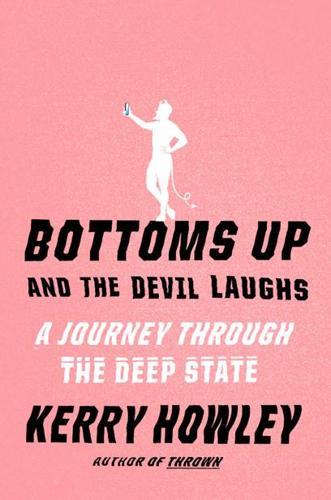
Bottoms Up and the Devil Laughs
by
Kerry Howley
Published 21 Mar 2023
The correspondent then sent him video instructions, as if written for a child, on how to set it up. He ignored that too. “I mean, now I had to watch a fucking video?” Greenwald later told Rolling Stone, in perhaps his most relatable moment. The correspondent gave up. Six months later, Greenwald heard from Laura Poitras, the filmmaker documenting Assange. Poitras was on a terrorist watchlist the government would not acknowledge existed. She had been stopped at the border “probably fifty times,” her notebooks seized, her devices confiscated, her credit cards taken, and so she had moved to Berlin, where she could move in and out free of harassment.
…
This was in 2014. Chelsea Manning was serving her sentence in a military prison in Kansas, during which she would not have the opportunity to appear on Real Time with Bill Maher, which is perhaps part of the reason why Snowden had accepted Julian Assange’s help to find asylum in Russia. In 2014 Laura Poitras, Glenn Greenwald, and journalist Jeremy Scahill founded The Intercept, an entire publication intended to analyze and exploit what former NSA and CIA director Michael Hayden called “the greatest hemorrhaging of legitimate American secrets in the history of the republic,” funded by eBay billionaire Pierre Omidyar.
…
Assange argued that it was a “honeytrap” operation set up by the CIA, though one imagines a honeytrap operation would be cleaner; he called Sweden “the Saudi Arabia of fundamentalist feminism.” On Facebook, his twenty-one-year-old son Daniel said it would be “interesting” to find out whether the charges had been part of “a government plot or personal grudges,” which indeed it would. “The man does have a way of making a lot of female enemies,” he said. In a documentary filmed by Laura Poitras, a polished, gray-haired lawyer named Helena Kennedy in a plaid blazer and turquoise necklace comes to talk to Assange about managing public relations as these accusations become public. They are on the British estate where Assange has set up base. “It’s about you getting your mind into not using language that sounds hostile to women,” she says gently.
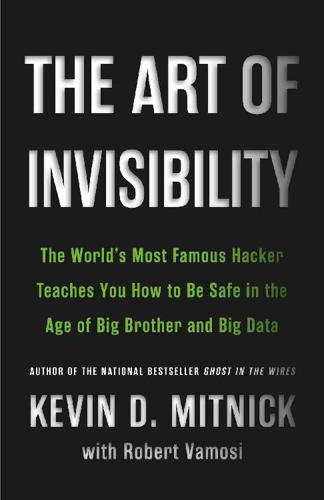
The Art of Invisibility: The World's Most Famous Hacker Teaches You How to Be Safe in the Age of Big Brother and Big Data
by
Kevin Mitnick
,
Mikko Hypponen
and
Robert Vamosi
Published 14 Feb 2017
But e-mail is not point-to-point, meaning that a single e-mail might hit several servers around the world before landing in the intended recipient’s inbox. Snowden knew that whatever he wrote could be read by anyone who intercepted the e-mail anywhere along its journey. So he had to perform a complicated maneuver to establish a truly secure, anonymous, and fully encrypted means of communication with privacy advocate and filmmaker Laura Poitras, who had recently finished a documentary about the lives of whistle-blowers. Snowden wanted to establish an encrypted exchange with Poitras, except only a few people knew her public key. She didn’t make her public key very public. To find her public key, Snowden had to reach out to a third party, Micah Lee of the Electronic Frontier Foundation, a group that supports privacy online.
…
They know all our purchases. They know where we have subscriptions. They know when we leave the country. And they know whenever we use a new machine to make a purchase online. According to Micah Lee of the EFF, at one point Snowden was in his Hong Kong hotel room discussing government secrets with Laura Poitras and Glenn Greenwald, a reporter from the Guardian, and at the same time he was on hold with the customer support department at DreamHost, an Internet provider based in Los Angeles. Apparently Snowden explained to DreamHost that he was overseas and didn’t trust the local Internet service, hence his use of Tor.
…
If I have to leave my laptop behind, then I never leave it in hibernate mode. Rather, I power it down. If I didn’t, an attacker could possibly dump the memory and obtain my PGP Whole Disk encryption keys.6 So I turn it all the way off. At the beginning of the book I talked about the many precautions that Edward Snowden took to keep his communication with Laura Poitras private. Once Snowden’s secret cache of data was ready to be released to the public, however, he and Poitras needed a place to store it. The most common operating systems—Windows, iOS, Android, and even Linux—contain vulnerabilities. All software does. So they needed a secure operating system, one that is encrypted from day one and requires a key to unlock it.

The Snowden Files: The Inside Story of the World's Most Wanted Man
by
Luke Harding
Published 7 Feb 2014
Greenwald felt the location was ‘bizarre’ and confusing: did he have a senior foreign posting there? The rendezvous was to be in Kowloon’s Mira Hotel, a chic, modern edifice in the heart of the tourist district, and a short cab ride away from the Star Ferry to Hong Kong Island. Accompanying Greenwald was Laura Poitras, also an American citizen, documentary film-maker and notable thorn in the side of the US military. She had been a matchmaker, the first to point Greenwald in the ghost’s direction. The two journalists were given meticulous instructions. They were to meet in a less-trafficked, but not entirely obscure, part of the hotel, next to a large plastic alligator.
…
Marauding jungle monkeys would often invade, picking fights with the dogs, sometimes pelting them with branches, or retreating into dense thickets of bamboo. At other times Greenwald rolled around with his animals; he says this is a welcome distraction from politics and the remorseless stream of Twitter. At the end of January 2013, Snowden tried a different way to get to him. He sent an email to Laura Poitras. He was hoping to open an anonymous channel to the documentary film-maker, who was Greenwald’s friend and a close collaborator. Poitras was another leading critic of the US security state – and one of its more prominent victims. For nearly a decade, Poitras had been working on a trilogy of feature-length films about America in the years following 9/11.
…
They suspected he was in fact carrying copies of Edward Snowden’s NSA and GCHQ files, which Greenwald was engaged in researching and publishing. Their prime purpose, as they were later to admit, was simply to get hold of the files, and find out how much Greenwald knew. On 11 August, Miranda had set off from their home in Rio de Janeiro to Berlin, flying via Heathrow. He spent several days with Greenwald’s fellow journalist Laura Poitras in the German capital. They discussed film projects. He did some sightseeing. He spent a couple of nights in a hotel. He was now flying home, again via the UK. The British and Americans had him under surveillance – possibly even the same spooks who had bugged Angela Merkel’s phone. The heavily encrypted Snowden files Miranda was carrying formed the basis of Greenwald and Poitras’s numerous articles for the Guardian and for other international publications, including France’s Le Monde, Germany’s Der Spiegel, the Washington Post and the New York Times.
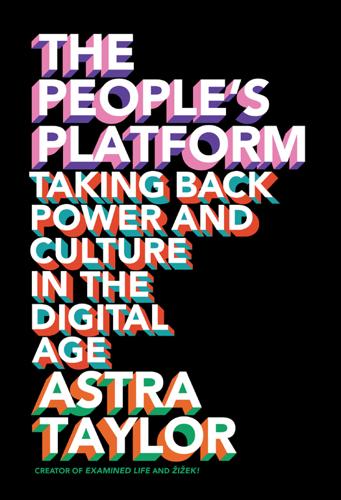
The People's Platform: Taking Back Power and Culture in the Digital Age
by
Astra Taylor
Published 4 Mar 2014
Marvin Ammori, “The Next Big Battle in Internet Policy,” Slate.com, October 2, 2012, http://www.slate.com/articles/technology/future_tense/2012/10/network_neutrality_the_fcc_and_the_internet_of_things_html. 2: FOR LOVE OR MONEY 1. Quotes from an interview with the author except for this one, which is from Justin Cox, “Documenting a Bin Laden Ex-Confidante: Q&A with Filmmaker Laura Poitras,” TheHill.com, July 13, 2010, http://thehill.com/capital-living/cover-stories/108553-documenting-a-bin-laden-ex-confidante-qaa-with-filmmaker-laura-poitras#ixzz2YfhpMdXu. 2. The other person Snowden contacted was the journalist Glenn Greenwald of the Guardian, with whom Poitras collaborated. 3. That start-up is Narrative Science, a computer program that generates sports stories.
…
We need to find other principles that can guide us, principles that better equip us to comprehend and confront the market’s role in shaping our media system, principles that help us rise to the unique challenge of bolstering cultural democracy in a digital era. Openness cannot protect us from, and can even perpetuate, the perils of a peasant’s kingdom. 2 FOR LOVE OR MONEY Not that many years ago, Laura Poitras was living in Yemen, alone, waiting. She had rented a house close to the home of Abu Jandal, Osama bin Laden’s former bodyguard and the man she hoped would be the subject of her next documentary. He put her off when she asked to film him, remaining frustratingly elusive. Next week, he’d tell her, next week, hoping the persistent American would just go away.
…
And the consequences of the digital upheaval are far more equivocal than the Shirkys and Benklers acknowledge. While the economics of the Web might apply to remixing memes or posting in online forums, the costs and risks associated with creative acts that require leaving one’s computer have hardly collapsed. Where will this new paradigm leave projects like The Oath? Following Shirky’s logic, Laura Poitras is one of those professionals who should be overthrown by noble amateurs, her labor-intensive filmmaking process a throwback to another era, before creativity was a connected, collective process. The Internet might be a wonderful thing, but you can’t crowdsource a relationship with a terrorist or a whistle-blower.
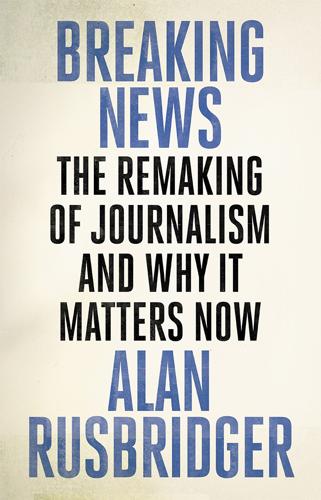
Breaking News: The Remaking of Journalism and Why It Matters Now
by
Alan Rusbridger
Published 14 Oct 2018
In 2014 I joined the board of the New York-based Committee to Protect Journalists, which does the most extraordinary work around the globe to help reporters and editors in trouble. In 2016 I investigated threats to the Kenyan press for the CPJ and in 2017 led a delegation to protest at the extra-judicial killings of Ukrainian journalists. 59. Alan Rusbridger, Janine Gibson, Stuart Millar, Laura Poitras, Ewen MacAskill, Spencer Ackerman. The other main journalists, lawyers, technical advisers involved and so on, apart from Glenn Greenwald and Laura Poitras – included Jeff Larson, Stephen Engelberg, Paul Steiger, James Ball, Nick Hopkins, David Leigh, Nick Davies, David Blishen, Henry Porter, Wolfgang Blau, Lenore Taylor, Gabriel Dance, Nadja Popovich, Greg Chen, Julian Borger, Richard Norton Taylor, Simon Jenkins, Gill Phillips, Sheila Fitzsimons, Dave Boxall, Kath Viner, Paul Johnson, Fielding Cage, Luke Harding, Jo Murray, Geraldine Proudler, Rebecca Ashton, Matt Rogerson, Gavin Millar QC, Tony Danker, Ken MacDonald QC, Gennady Kolker, Jan Clements, Dominic Rushe, David Schulz and Matt Rogerson.
…
It was, by a mile, the most complex story we had ever handled – logistically, ethically, legally, editorially, technologically. It made WikiLeaks look easy. From the very first there were multiple decisions. Greenwald, as already discussed, lived in Rio with his partner, David Miranda, and 13 rescue dogs. I had never met him. Snowden had also contacted Laura Poitras,7 a gifted filmmaker with, it seemed, a marked antipathy to mainstream media. I had never met her either. Finally, Snowden was also in touch with Barton Gellman, a senior writer for the Washington Post. He was – to all intents and purposes – a rival. My first knowledge of the Greenwald contact came from Janine Gibson, our US editor.
…
Greenwald would obviously resign and continue with the revelations – and he definitely didn’t believe in engaging with the agencies before publishing.13 Any legal action could take two or three years and cost millions. We (and the government) would watch impotently as the NYT, Washington Post, ProPublica, Der Spiegel and Laura Poitras had a field day with the material we no longer had. We were certainly not handing anything over to the government. We owed it to our source not to do that. So – given that we had another copy in the US – destruction of the London copy was the least worst option. A couple of days later two GCHQ technicians arrived to supervise the destruction of the machines we had been working on.
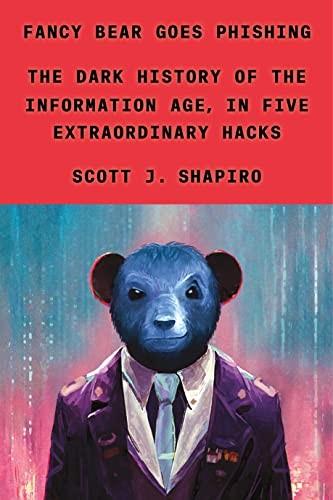
Fancy Bear Goes Phishing: The Dark History of the Information Age, in Five Extraordinary Hacks
by
Scott J. Shapiro
“this law means”: “In Speech, Wyden Says Official Interpretations of Patriot Act Must Be Made Public,” United States Senate, May 26, 2011, https://www.wyden.senate.gov/news/press-releases/in-speech-wyden-says-official-interpretations-of-patriot-act-must-be-made-public. perhaps intentionally so: Charlie Savage, Power Wars: A Relentless Rise of Presidential Authority (New York: Back Bay, 2015), 174. Laura Poitras’s riveting documentary: Laura Poitras, Citizenfour (2014). one party outside: 50 USC §1881a, often known as Section 702 of the FISA Amendments Act (2008). not because the NSA told us: The Office of the Director of National Intelligence has since published a helpful infographic: https://www.dni.gov/files/icotr/Section702-Basics-Infographic.pdf.
…
The next day, both The Washington Post and The Guardian published articles describing a program code-named PRISM, which both papers claimed allowed the NSA to directly access the servers of major tech companies to retrieve the content of international messages. “The National Security Agency and the FBI are tapping directly into the central servers of nine leading U.S. Internet companies, extracting audio and video chats, photographs, e-mails, documents, and connection logs that enable analysts to track foreign targets,” wrote Barton Gellman and Laura Poitras on June 6, 2013. Greenwald’s and Gellman and Poitras’s articles would win The Guardian and The Washington Post the Pulitzer Prize in Public Service. Snowden not only caused an intelligence crisis for the national security community—a Pentagon review concluded that his theft of secrets was the “largest in American history”—but he also created a political crisis.
…
Snowden revealed that the U.S. government was actively subverting the rule of law by hiding upcode behind a secret court so as to conceal what the NSA was doing with downcode. The American people therefore had no way of knowing what they were authorizing, and their representatives did not know what they were enacting, because the U.S. government had made the law a highly classified state secret. NSA Has Upcode Too In Laura Poitras’s riveting documentary Citizenfour, a wan and tired Edward Snowden is shown at the moments he leaks to the journalists in his Hong Kong hotel room. He shows them the infamous PowerPoint deck of forty-one slides explaining the workings of PRISM, the surveillance program that collects internet communications from various U.S. companies.
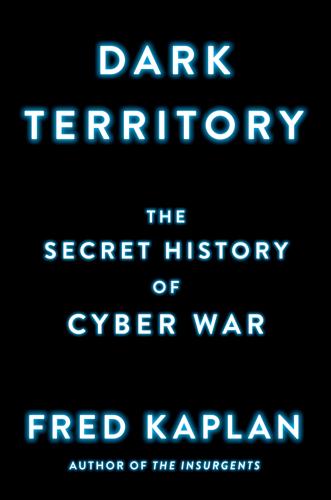
Dark Territory: The Secret History of Cyber War
by
Fred Kaplan
Published 1 Mar 2016
These were the first of many stories, published over the next several months by The Guardian, the Post, Der Spiegel, and eventually others, based on a massive trove of beyond-top-secret documents that NSA systems administrator Edward Snowden had swiped off his computer at the agency’s facility in Oahu, Hawaii, and leaked to three journalists before fleeing to Hong Kong, where he met with two of them, Laura Poitras and Glenn Greenwald. (The other reporter, Barton Gellman, couldn’t make the trip.) The timing of the leak, coming on the eve of the Obama-Xi summit, was almost certainly happenstance—Snowden had been in touch with the reporters for months—but the effect was devastating. Obama brought up Chinese cyber theft; Xi took out a copy of The Guardian.
…
On June 6, The Washington Post and The Guardian: “Verizon Forced to Hand Over Telephone Data—Full Court Ruling,” The Guardian, June 5, 2013, accompanying Glenn Greenwald, “NSA Collecting Phone Records of Millions of Verizon Customers Daily,” The Guardian, June 6, 2013; “NSA Slides Explain the Prism Data-Collection Program,” Washington Post, June 6, 2013, which accompanied Barton Gellman and Laura Poitras, “U.S., British Intelligence Mining Data from Nine U.S. Internet Companies in Broad Secret Program,” Washington Post, June 7, 2013; Glenn Greenwald and Ewen MacAskill, “NSA Prism Program Taps in to User Data of Apple, Google, and others,” The Guardian, June 7, 2013. The Guardian and the Post, which both had Snowden documents, were locked in a fierce competition over who could publish first.
…
For a list of all the Post’s Snowden-based stories, see http://dewitt.sanford.duke.edu/gellmanarticles/. These were the first of many stories: For the journalists’ accounts of their encounters with Snowden, see “Live Chat: NSA Surveillance: Q&A with Reporter Barton Gellman,” July 15, 2014, http://live.washingtonpost.com/nsa-surveillance-bart-gellman.html; and Laura Poitras’s documentary film, CitizenFour, 2014. For critical views of Snowden, see Fred Kaplan, “Why Snowden Won’t (and Shouldn’t) Get Clemency,” Slate, Jan. 3, 2014, http://www.slate.com/articles/news_and_politics/war_stories/2014/01/edward_snowden_doesn_t_deserve_clemency_the_nsa_leaker_hasn_t_proved_he.html; Mark Hosenball, “NSA Memo Confirms Snowden Scammed Passwords from Colleagues,” Reuters, Feb. 13, 2014, http://www.reuters.com/article/2014/02/13/us-usa-security-idUSBREA1C1MR20140213; George Packer, “The Errors of Edward Snowden and Glenn Greenwald,” Prospect, May 22, 2014, http://www.prospectmagazine.co.uk/features/the-errors-of-edward-snowden-and-glenn-greenwald.
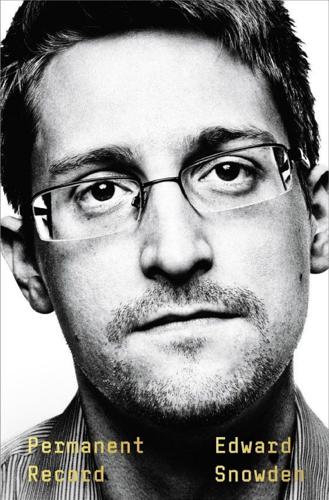
Permanent Record
by
Edward Snowden
Published 16 Sep 2019
As I narrowed down my list of potential partners, I realized I’d been going about this all wrong, or just wastefully. Instead of trying to select the journalists on my own, I should have been letting the system that I was trying to expose select them for me. My best partners, I decided, would be journalists whom the national security state had already targeted. Laura Poitras I knew as a documentarian, primarily concerned with America’s post-9/11 foreign policy. Her film My Country, My Country depicted the 2005 Iraqi national elections that were conducted under (and frustrated by) the US occupation. She had also made The Program, about the NSA cryptanalyst William Binney—who had raised objections through proper channels about TRAILBLAZER, the predecessor of STELLARWIND, only to be accused of leaking classified information, subjected to repeated harassment, and arrested at gunpoint in his home, though never charged.
…
I’d briefly jam a network, causing its legitimate users to be booted off-line; in their attempt to reconnect, they’d automatically rebroadcast their “authentication packets,” which I could intercept and effectively decipher into passwords that would let me log on just like any other “authorized” user. With this network map in hand, I’d drive around Oahu like a madman, trying to check my email to see which of the journalists had replied to me. Having made contact with Laura Poitras, I’d spend much of the evening writing to her—sitting behind the wheel of my car at the beach, filching the Wi-Fi from a nearby resort. Some of the journalists I’d chosen needed convincing to use encrypted email, which back in 2012 was a pain. In some cases, I had to show them how, so I’d upload tutorials—sitting in my idling car in a parking lot, availing myself of the network of a library.
…
I’d had a plan—I’d had multiple plans—in which a single mistake would have meant getting caught, and yet I hadn’t been: I’d made it out of the NSA, I’d made it out of the country. I had beaten the game. By every standard I could imagine, the hard part was over. But my imagination hadn’t been good enough, because the journalists I’d asked to come meet me weren’t showing up. They kept postponing, giving excuses, apologizing. I knew that Laura Poitras—to whom I’d already sent a few documents and the promise of many more—was ready to fly anywhere from New York City at a moment’s notice, but she wasn’t going to come alone. She was busy trying to get Glenn Greenwald to commit, trying to get him to buy a new laptop that he wouldn’t put online. Trying to get him to install encryption programs so we could better communicate.
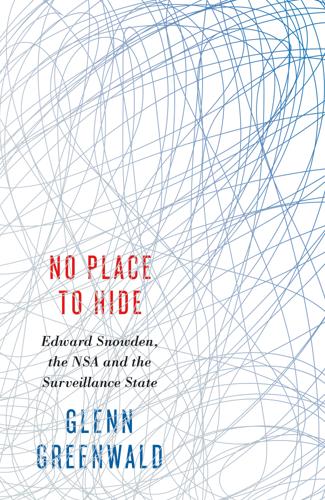
No Place to Hide: Edward Snowden, the NSA, and the U.S. Surveillance State
by
Glenn Greenwald
Published 12 May 2014
On April 18, I flew from my home in Rio de Janeiro to New York, where I was scheduled to give some talks on the dangers of government secrecy and civil liberties abuses done in the name of the War on Terror. On landing at JFK Airport, I saw that I had an email message from Laura Poitras, the documentary filmmaker, which read: “Any chance you’ll be in the US this coming week? I’d love to touch base about something, though best to do in person.” I take seriously any message from Laura Poitras. One of the most focused, fearless, and independent individuals I’ve ever known, she has made film after film in the riskiest of circumstances, with no crew or the support of a news organization, just a modest budget, one camera, and her determination.
…
Snowden’s fearlessness and unbreakable tranquility—grounded in the conviction that he was doing the right thing—drove all the reporting I did on this story, and will profoundly influence me for the rest of my life. The impact this story had would have been impossible without my incomparably brave and brilliant journalistic partner and friend, Laura Poitras. Despite years of harassment at the hands of the US government for the films she made, she never once hesitated in pursuing this story aggressively. Her insistence on personal privacy, her aversion to the public spotlight, has sometimes obscured how indispensable she has been to all of the reporting we were able to do.

Hacker, Hoaxer, Whistleblower, Spy: The Story of Anonymous
by
Gabriella Coleman
Published 4 Nov 2014
Stephen Duncombe, Dream: Re-imagining Progressive Politics in an Age of Fantasy (New York: New Press, 2007). Conclusion: Daybreak 1. Lauren Cornell, “Primary Documents” (interview with Laura Poitras), Mouse Magazine, issue 40, last accessed July 7, 2014, available at http://www.moussemagazine.it/articolo.mm?id=1020. 2. Barton Gellman and Julie Tate, “In NSA-Intercepted Data, Those Not Targeted Far Outnumber the Foreigners Who Are,” washingtonpost.com, July 5, 2014. 3. James Risen and Laura Poitras, “N.S.A. Report Outlined Goals for More Power,” nytimes.com, Nov. 22, 2013. 4. Samuel Warren and Louis Brandeis, “The Right to Privacy” Harvard Law Review, vol.
…
Snowden’s decision to blow the top off the NSA (and, by extension, its British counterpart, the GCHQ) was a risky but carefully plotted act. It substantiated what privacy activists had been warning about for years, but the leaks provided them with far more solid and extensive facts on which to base their claims. Laura Poitras, one of the first three journalists to receive the NSA documents, remarked on the novelty of this situation: “The disclosures made by Snowden have lifted a curtain and revealed a vast hidden world where decisions are made and power operates in secret outside of any public oversight or consent … my vision hasn’t really changed, but what I’m able to see has vastly increased.”1 Here is but a fraction of what we we can now see: the NSA spied upon or directly surveilled thirty-eight embassies; until 2011, the NSA harvested and stored vast troves of American emails and metadata under a program called Stellar Wind; the NSA compelled tech giants to hand over data using FISA court warrants—while also covertly tapping into fiber-optic cables, like those owned by Google, to secretly siphon even more data; the NSA hacked into Al Jazeera’s internal communications systems; the GCHQ led a DDoS attack against Anonymous and hacked Belgacom, a partly state-owned Belgian telecommunications company; and under a program fittingly called Optic Nerve, the GCHQ intercepted and stored webcam images from millions of Yahoo!
…
users; a four-month investigation by Barton Gellman and Julie Tate demonstrated that “ordinary Internet users, American and non-American alike, far outnumber legally targeted foreigners in the communications intercepted by the National Security Agency.”2 Astonishingly, a 2012 NSA report, also included in the leaks, revealed the spy agency’s dissatisfaction with all of these accomplishments. The NSA sought to broaden its reach further by deploying an even more aggressive cyberoffensive strategy, so that they might gather data from “anyone, anytime, anywhere,” as reported by Laura Poitras and James Risen for the New York Times.3 Such aggressive and wide-ranging forms of surveillance preemptively decimate the possibility of a “right to be let alone,” to use the famous 1890 phrasing of Samuel Warren and Louis Brandeis, who were among the first to consider the legal basis of privacy.4 And the style of surveillance employed today strikes not only at the personal, exploratory private sphere deemed valuable in liberal subject formation—it also preempts many forms of association that are essential to democratic life.
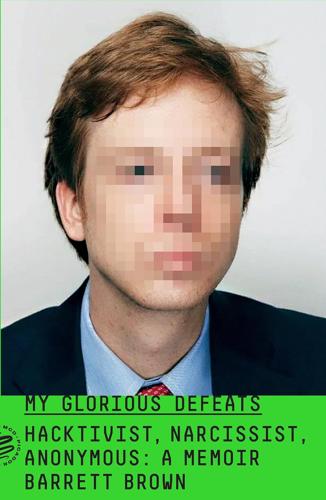
My Glorious Defeats: Hacktivist, Narcissist, Anonymous: A Memoir
by
Barrett Brown
Published 8 Jul 2024
The Intercept itself refrained from putting up any sort of explanation on its website; instead Greenwald released a statement asserting that the cost was too great, and that anyway other outlets possessing portions of the documents had mostly stopped reporting on the contents. And then I learned that Laura Poitras—the Intercept cofounder who’d been the one Snowden went to next after Greenwald initially brushed him off—had been excluded from the decision, and that Snowden himself hadn’t been consulted or even told. I reached out to Laura to get a sense of what was going on and ask if there was anything I could do to help.
…
The New York Times’ Ben Smith noted that Betsy Reed, the longtime Intercept editor in chief who’d accepted my National Magazine Award on my behalf, “had assigned the investigation to Lynn Dombek, then The Intercept’s head of research, who reported directly to her … Ms. Reed’s oversight of the investigation, [First Look cofounder Laura] Poitras wrote, was an attempt ‘to cover up what happened for self-protective reasons.’ It was, Mr. Greenwald agreed privately, a ‘whitewash.’” 13 The Things That Should Have Been The collaborative system that Project PM had originally been intended to put out back in 2009 would now go forward, in a greatly improved form drawing upon the lessons of digital organizing and online activism, under the name of Pursuance, and it would be quite a neat little thing, allowing huge numbers of individuals and existing organizations who’ve agreed to a basic set of commonly held beliefs to self-organize and achieve wonderful things, from crowdsourced research to philanthropy to political engagement.
…
Things were well in motion by the time of my release, with my media push kicking off twenty minutes after I’d walked out the gates at Three Rivers. Alex Winter had brought a camera crew to film in the car as my parents drove me from the prison to the halfway house I was required to check into within seven hours or face rearrest; the resulting short documentary, done for Laura Poitras’s new film company, would appear a few weeks later. This wasn’t the right format to bring up Pursuance; it had to be introduced by someone other than me, and anyway I was carsick for much of the shoot because smoking lots of Marlboro Reds after abstaining from smoking for four years turns out to be ill-advised.

Orwell Versus the Terrorists: A Digital Short
by
Jamie Bartlett
Published 12 Feb 2015
Orwell versus the Terrorists Crypto-Wars and the Future of Internet Surveillance Jamie Bartlett Introduction In late 2012 the National Security Agency (NSA) contractor Edward Snowden contacted Guardian journalist Glenn Greenwald, saying he had sensitive documents about government surveillance he would like to share. In early 2013 he started sending Greenwald – along with the documentary maker Laura Poitras – evidence that revealed the extent of internet surveillance by the US, UK and other governments. In May, fearing prosecution, Snowden left the US, and flew to Hong Kong. On 5 June 2013 the Guardian published the first of what would become a long-running series of articles based on his leaked documents, followed in short order by Der Spiegel, the Washington Post, the New York Times and Le Monde, who had also received part of the cache.
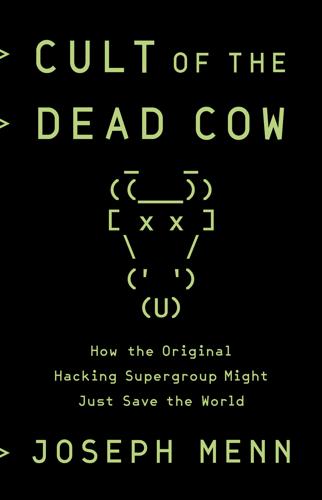
Cult of the Dead Cow: How the Original Hacking Supergroup Might Just Save the World
by
Joseph Menn
Published 3 Jun 2019
When he felt compelled to warn the world about what his agency had been doing, Snowden first reached out anonymously to a new EFF spin-off called the Freedom of the Press Foundation, which had been formed in support of WikiLeaks by Barlow, Pentagon Papers leaker Daniel Ellsberg, Boing Boing’s Xeni Jardin, and a few EFF staffers. One of the staffers recommended Snowden get in touch with Freedom of the Press Foundation director Laura Poitras, who had been making a movie about WikiLeaks, and former Salon columnist Glenn Greenwald at the UK’s Guardian. The Guardian published many of the most important revelations from Snowden’s trove, but the pair also collaborated with other publications, including the Washington Post and the New York Times, to write up Snowden’s disclosures.
…
He attached his name to security research on other issues that drew wide attention, but some coauthors later complained that he had asked to be added so that he could use his fame to promote the work. Jake flouted his edginess in multiple ways, including boasting of his past work for San Francisco bondage porn site Kink.com and sexually propositioning people at first meeting, even in professional contexts. He bragged of multiple lovers and had relationships with filmmaker Laura Poitras, who later acknowledged that he had mistreated a friend of hers, as well as Boing Boing’s Xeni Jardin, a friend to several in cDc. Jake spoke of waking up in bed with Assange and two women, and he attended private sex parties (less rare in hacker culture than elsewhere). Even there, he pushed past the norms of the environment.

We Are Data: Algorithms and the Making of Our Digital Selves
by
John Cheney-Lippold
Published 1 May 2017
This recognition is often done through the apparatus of the state, which is how I connect citizenship to Arendt’s conception. See Alison Kesby, The Right to Have Rights: Citizenship, Humanity, and International Law (Oxford: Oxford University Press: 2012); and Hannah Arendt, The Human Condition, 2nd ed. (Chicago: University of Chicago Press, 1998). 15. Barton Gellman and Laura Poitras, “U.S., British Intelligence Mining Data from Nine U.S. Internet Companies in Broad Secret Program,” Washington Post, June 6, 2013, www.washingtonpost.com. 16. John Cheney-Lippold, “Jus Algoritmi: How the NSA Remade Citizenship,” International Journal of Communications 10 (2016): 1721–1742. 17.
…
See antimatter15, “X-No-Wiretap—Blog,” September 2013, http://antimatter15.com. 20. Eric Holder, as cited in Glenn Greenwald and James Ball, “The Top Secret Rules That Allow NSA to Use US Data without a Warrant,” Guardian, June 20, 2013, www.theguardian.com (emphasis added). 21. Barton Gellman and Laura Poitras, “U.S., British Intelligence Mining Data from Nine U.S. Internet Companies in Broad Secret Program,” Washington Post, June 6, 2013, www.washingtonpost.com. 22. Eric Holder, “Procedures Used by the National Security Agency for Targeting Non–United States Persons Reasonably Believed to Be Located outside the United States to Acquire Foreign Intelligence Information Pursuant to Section 702 of the Foreign Intelligence Surveillance Act of 1978, as Amended,” 2009, www.aclu.org. 23.

This Is How They Tell Me the World Ends: The Cyberweapons Arms Race
by
Nicole Perlroth
Published 9 Feb 2021
Joe Menn at Reuters took that reporting a step further with an investigation, published that December, which revealed that NSA had paid RSA, a leading cybersecurity company, to use a weak algorithm in its commercial encryption products that the NSA could break. The vast majority of reporting on how the NSA and GCHQ are capturing data in transit and from the end points came from the Snowden documents and was first reported by Glenn Greenwald, then at the Guardian, Barton Gellman, and Laura Poitras, for the Washington Post. Subsequent reporting by Poitras also appeared in Der Spiegel, with Marcel Rosenbach and Holger Stark. My colleagues James Glanz, Andrew Lehren, and Jeff Larson, then of ProPublica, wrote an account of how the NSA and its Five Eyes partners tap data from mobile apps in January 2014.
…
The Intercept’s Ryan Gallagher and Peter Maass detailed the NSA’s move to hack IT System administrators in 2014, “Inside the NSA’s Secret Efforts to Hunt and Hack System Administrators.” The most comprehensive account of AT&T’s work with NSA was written by Julia Angwin, Charlie Savage, Jeff Larson, Henrik Moltke, Laura Poitras, and James Risen in their 2015 collaboration for the New York Times, “AT&T Helped U.S. Spy on Internet on a Vast Scale.” Barton Gellman and Ellen Nakashima provided the most granular look at the NSA’s offensive cyber operations in their 2013 Washington Post piece “U.S. Spy Agencies Mounted 231 Offensive Cyber-Operations in 2011, Documents Show.”
…
The first Snowden leaks of the NSA’s Prism project appeared in June 2013 in the Guardian, which described Prism as a “team sport” between tech companies and the FBI, CIA, and NSA: Glenn Greenwald and Ewen MacAskill, “NSA Prism Program Taps into User Data of Apple, Google and Others,” June 7, 2013. One month later, Greenwald, MacAskill, Laura Poitras, Spencer Ackerman, and Dominic Rushe reported that Microsoft was giving the NSA access to encrypted messages: “Microsoft Handed the NSA Access to Encrypted Messages,” Guardian, July 12, 2013. My colleague Claire Cain Miller and I reported on the aftermath for the technology companies, as officials overseas threatened to “Balkanize” the internet: “N.S.A.

The Perfect Weapon: War, Sabotage, and Fear in the Cyber Age
by
David E. Sanger
Published 18 Jun 2018
the existence of the NSA program: Barton Gellman and Laura Poitras, “U.S., British Intelligence Mining Data from Nine U.S. Internet Companies in Broad Secret Program,” Washington Post, June 7, 2016, www.washingtonpost.com/investigations/us-intelligence-mining-data-from-nine-us-internet-companies-in-broad-secret-program/2013/06/06/3a0c0da8-cebf-11e2-8845-d970ccb04497_story.html. Mark Zuckerberg posted a heated defense: Mark Zuckerberg, Facebook post, June 7, 2013, www.facebook.com/zuck/posts/10100828955847631. a long history of cooperation: Julia Angwin, Charlie Savage, Jeff Larson, Henrik Moltke, Laura Poitras, James Risen, “AT&T Helped U.S.
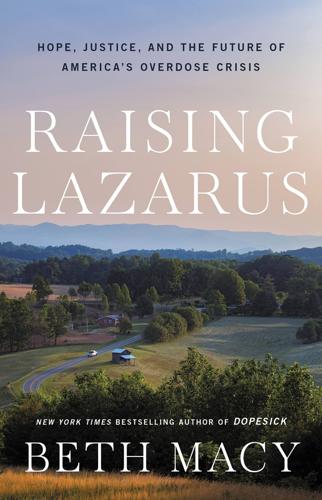
Raising Lazarus: Hope, Justice, and the Future of America’s Overdose Crisis
by
Beth Macy
Published 15 Aug 2022
Kapler, a slight blonde, had spotted someone surveilling the group outside of Goldin’s apartment in Brooklyn. In the following weeks she saw him again twice, including outside her own apartment in another neighborhood. When her companion started videoing him, he fled. “He looked like a big old Staten Island guy,” said Goldin, who sought advice from filmmaker Laura Poitras, whose national security reporting had won an Academy Award and who was working on a documentary about PAIN. “It was very scary,” Goldin said. “At one point, I went and stayed with somebody else.” Quinn feared that the moment the Sacklers secured legal immunity, they would sue his clients. He, too, had been spooked by the presence of a man walking outside his family home in ten-degree weather with a flashlight—in New York’s Hudson Valley, where he’d retreated when the pandemic hit.
…
Van Rooyan had spent several years following his death petitioning and calling on the FDA to restrict OxyContin use to severe pain only, but her efforts were thwarted repeatedly. “Having to make that video really put me back into a funk,” she told the group. “But today, for me at least, my soul feels like it’s flying.” Flanked by her assistants (and with Laura Poitras’s documentary crew filming from the sidelines), Nan Goldin watched the hearing in her apartment, frantically texting her cohorts every time an official landed a blow. “The world is hearing us, finally,” she said. Quinn encouraged them to emphasize to reporters they spoke with how “good it was that there was bipartisan hatred of the Sacklers.”

Future Crimes: Everything Is Connected, Everyone Is Vulnerable and What We Can Do About It
by
Marc Goodman
Published 24 Feb 2015
Of course, there have also been widespread allegations of hacking by the United States against the rest of the world, based largely on the numerous classified documents stolen and unilaterally released by the former National Security Agency (NSA) contractor Edward Snowden beginning in June 2013. Snowden detailed at great length the global technical surveillance apparatus run by the National Security Agency and provided documentary evidence to support his claims in discussions with the journalists Glenn Greenwald and Laura Poitras. Programs such as PRISM and XKeyscore subsequently came to light, as did the NSA’s purported ability to track billions of e-mails, phone messages, chat sessions, and SMS texts each and every day. While living in Moscow, Russia, under temporary asylum status, Snowden continued to catalog U.S. offensive cyber and technical operations, including the tapping of the personal mobile phones belonging to world leaders ranging from the German chancellor Angela Merkel to the Brazilian president Dilma Rousseff.
…
Arkin, “A Hidden World, Growing Beyond Control,” Washington Post, July 19, 2010; James Bamford, “The NSA Is Building the Country’s Biggest Spy Center (Watch What You Say),” Wired, March 15, 2012. 59 Given the exponential growth: Dan Nosowitz, “Every Six Hours, the NSA Gathers as Much Data as Is Stored in the Entire Library of Congress,” Popular Science, May 10, 2011. 60 In response, the government: Bamford, “NSA Is Building the Country’s Biggest Spy Center.” 61 NSA’s PRISM program allowed: Timothy B. Lee, “Here’s Everything We Know About PRISM to Date,” Washington Post, June 12, 2013. 120 Snowden also revealed: James Risen and Laura Poitras, “N.S.A. Gathers Data on Social Connections of U.S. Citizens,” New York Times, Sept. 28, 2013. 62 These network graphs: Barton Gellman and Ashkan Soltani, “NSA Collects Millions of E-mail Address Books Globally,” Washington Post, Nov. 1, 2013. 63 Not only did the NSA: Barton Gellman and Ashkan Soltani, “NSA Infiltrates Links to Yahoo, Google Data Centers Worldwide, Snowden Documents Say,” Washington Post, Nov. 1, 2013. 64 Using the same basic techniques: Floor Boon, Steven Derix, and Huib Modderkolk, “NSA Infected 50,000 Computer Networks with Malicious Software,” Nrc.nl, Nov. 23, 2013. 65 The agency even posed as Facebook: Dustin Volz, “The NSA Is Using Facebook to Hack into Your Computer,” National Journal, March 12, 2014. 66 Together, the agencies participated: Spencer Ackerman and James Ball, “Optic Nerve: Millions of Yahoo Webcam Images Intercepted by GCHQ,” Guardian, Feb. 27, 2014. 67 For example, the spy agency: Ashkan Soltani, Rea Peterson, and Barton Gellman, “NSA Uses Google Cookies to Pinpoint Targets for Hacking,” Washington Post, Dec. 10, 2013. 68 According to Snowden, the NSA: James Larson, Jeff Glanz, and Andrew W.
…
Study,” Engadget, Dec. 11, 2005. 45 In Germany in 2008: Kim Zetter, “Hackers Publish German Minister’s Fingerprint,” Wired, March 31, 2008; Cory Doctorow, “Hackers Publish Thousands of Copies of Fingerprint of German Minister Who Promotes Fingerprint Biometrics,” Boing Boing, April 1, 2008. 46 Lin paid doctors: Stuart Fox, “Chinese Woman Surgically Switches Fingerprints to Evade Japanese Immigration Officers,” Popular Science, Dec. 8, 2009. 47 Japanese police report: “Japan ‘Fake Fingerprints’ Arrest,” BBC, Dec. 7, 2009. 48 Lewis created the first-ever: Kelly Jackson Higgins, “Black Hat Researcher Hacks Biometric System,” Dark Reading, March 31, 2008. 49 Back in today’s world: Mark Brown, “Japanese Billboard Recognises Age and Gender,” Wired UK, Sept. 23, 2010. 50 If one is detected: Natasha Singer, “When No One Is Just a Face in the Crowd,” New York Times, Feb. 1, 2014. 51 A similar system: Barbara De Lollis, “Houston Hilton Installs Facial Recognition,” USA Today, Oct. 1, 2010. 52 They might: “Biometric Surveillance Means Someone Is Always Watching,” Newsweek, April 17, 2014. 53 Facial-recognition technologies: Ibid. 54 All the major Internet companies: Darren Murph, “Face.com Acquired by Facebook for an Estimated $80 Million+, Facial Tagging Clearly at the Forefront,” Engadget, June 18, 2012. 55 Facebook’s automatic: Adam Clark Estes, “Facebook’s Doing Face Recognition Again and This Time America Doesn’t Seem to Mind,” Motherboard, Feb. 5, 2013. 56 More than a quarter of a trillion: Adi Robertson, “Facebook Users Have Uploaded a Quarter-Trillion Photos Since the Site’s Launch,” Verge, Sept. 17, 2013; “Biometrics and the Future of Identification,” NOVA Next, accessed Aug. 6, 2014. 57 In his series of revelations: “How Spy Scandal Unravelled,” BBC News, Nov. 7, 2013. 58 “facial recognition quality”: James Risen and Laura Poitras, “N.S.A. Collecting Millions of Faces from Web Images,” New York Times, May 31, 2014. 59 When facial-recognition is combined: Sebastian Anthony, “UK, the World’s Most Surveilled State, Begins Using Automated Face Recognition to Catch Criminals,” ExtremeTech, July 17, 2014. 60 The program that makes this: Steve Henn, “9/11’s Effect on Tech,” Marketplace.org, Sept. 8, 2011; Tim Greene, “Black Hat: System Links Your Face to Your Social Security Number and Other Private Things,” Network World, Aug. 1, 2011. 61 In mid-2011: Amir Efrati, “Google Acquires Facial Recognition Technology Company,” Digits (blog), Wall Street Journal, July 22, 2011; Kit Eaton, “How Google’s New Face Recognition Tech Could Change the Web’s Future,” Fast Company, July 25, 2011. 62 NameTag allows users: Simson Garfinkel, “Google Glass Will Be a Huge Success—Unless People Find It Creepy,” MIT Technology Review, Feb. 17, 2014; Kashmir Hill, “Google Glass Facial Recognition App Draws Senator Franken’s Ire,” Forbes, Feb. 5, 2014. 63 Such facial-recognition apps: Michelle Starr, “Facial Recognition App Matches Strangers to Online Profiles,” CNET, Jan. 7, 2014. 64 The FBI’s billion-dollar: Jeremy Hsu, “FBI’s Facial Recognition Database Will Include Non-criminals,” IEEE Spectrum, April 16, 2014; Mark Rockwell, “Details Emerge on Scope of FBI’s Identification System,” FCW, April 15, 2014. 65 Not only can the system: Sara Reardon, “FBI Launches $1 Billion Face Recognition Project,” New Scientist, Sept. 7, 2012. 66 Of course no biometric technology: Adam Goldman, “More Than 1 Million People Are Listed in U.S.

The System: Who Owns the Internet, and How It Owns Us
by
James Ball
Published 19 Aug 2020
Having failed to get him they then even roused their colleagues in MI5 to wake UK-based Guardian staff to see if any could overrule Gibson. None could. The story ran and immediately led bulletin after bulletin. And then the next day came another, then another – and then that Sunday, Edward Snowden revealed himself to the world in a video interview with Greenwald, MacAskill and film-maker Laura Poitras. Given he had worked for them, Snowden knew the meaning and contents of what he handed over on the USA’s intelligence agencies. But he had suspected the UK’s agencies would be doing much the same, so had taken classified internal documents (routinely shared with the US) from the UK’s GCHQ (short for Government Communications Headquarters) signals intelligence agency which he handed over to MacAskill in Hong Kong, before destroying everything still in his possession and attempting to flee to Ecuador – only to get stuck in Moscow, where he still resides.

Free Speech: Ten Principles for a Connected World
by
Timothy Garton Ash
Published 23 May 2016
The proceedings, like all Ditchley conferences, were held under the Chatham House Rule (nothing may be attributed to any identifiable individual), but a good summary is given in this note by the foundation’s director: ‘Intelligence, Security and Privacy’, http://perma.cc/5S5T-7VF5 54. see the chapter by Sudha Setty in Cole et al., eds. 2013, 57–71; this detail is on 68 55. see the chapter by Shiri Krebs in Cole et al., eds. 2013, 133–53 56. see the footage from his hotel room in Hong Kong in Laura Poitras’s documentary film ‘Citizenfour’ 57. Harding 2014, 182 58. see Joss Wright, ‘How Can You Tell What’s Banned on the Internet?’, Free Speech Debate, http://freespeechdebate.com/en/discuss/how-free-is-the-internet-in-liberal-democracies/ 59. Kohn 2011, 201–12 60. Clarke et al. 2014, 225 61. SEC: Office of the Whistleblower, http://perma.cc/5DNQ-CZVB 62.
…
See also Margaret Sullivan, ‘The Disconnect on Anonymous Sources’, New York Times, 12 October 2013, http://www.nytimes.com/2013/10/13/opinion/sunday/the-public-editor-the-disconnect-on-anonymous-sources.html, which reports that back in 2004 the use of anonymous sources had been the top concern of Times readers 82. see Margaret Sullivan, ‘The Disconnect on Anonymous Sources’, New York Times, 12 October 2013, http://www.nytimes.com/2013/10/13/opinion/sunday/the-public-editor-the-disconnect-on-anonymous-sources.html?_r=0 83. see the footage from his hotel room in Hong Kong in Laura Poitras’s documentary film ‘Citizenfour’ at 1:03:37. Similarly, you can watch on freespeechdebate.com an interview with Thomas Drake, the earlier NSA whistleblower. If you do not conclude after watching that video—and then, if you want more, reading everything you can about him—that here was a patriotic, public-spirited person, grotesquely mistreated as a result, then you and I have different eyes.
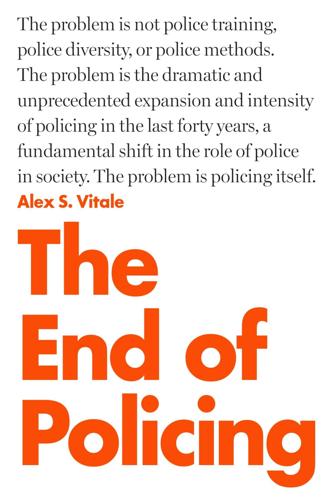
The End of Policing
by
Alex S. Vitale
Published 9 Oct 2017
Miller also highlights the troubling practices of detaining and searching US citizens because of their political, academic, and journalistic activities. Agents have watchlists; people on these lists can be arrested and interrogated and have their electronic possessions seized when crossing the border. The journalist and filmmaker Laura Poitras was detained multiple times after she worked with whistleblower Edward Snowden and produced a film called My Country, My Country, which criticizes US policy in the Middle East. American scholars of Islam and the Middle East have been accused of terrorism, detained without lawyers, and had their personal and electronic possessions searched and seized without a warrant.

New Dark Age: Technology and the End of the Future
by
James Bridle
Published 18 Jun 2018
Code words multiplied, becoming a kind of sinister poetry: TEMPORA, MUSCULAR, MYSTIC, BLARNEY and BOUNDLESS INFORMANT; NOSEY SMURF, HIDDEN OTTER, CROUCHING SQUIRREL, BEARDED PIGGY and SQUEAKY DOLPHIN. Ultimately, these endless lists come to obscure the practical reality of a global surveillance system that is irreducible to its component parts. As Edward Snowden wrote in his first email to the filmmaker Laura Poitras, ‘Know that every border you cross, every purchase you make, every call you dial, every cell phone tower you pass, friend you keep, article you write, site you visit, subject line you type, and packet you route, is in the hands of a system whose reach is unlimited but whose safeguards are not.’25 But what remains most striking, just a few years after the revelations, is ultimately not their extent, but how obvious they should have been – and how little has changed.
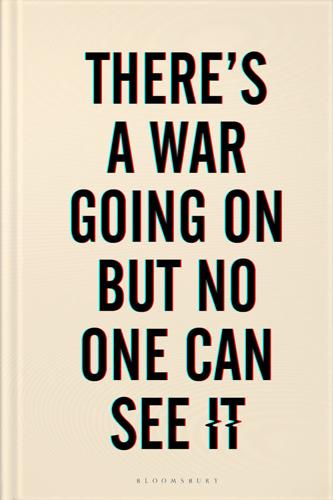
There's a War Going on but No One Can See It
by
Huib Modderkolk
Published 1 Sep 2021
From there, we used a chat program with end-to-end encryption. This, we hoped, would let us get closer to the right people. * From the Netherlands we took the autobahn to Hamburg, where Der Spiegel occupies a vast, shimmering edifice on a branch of the Norderelbe. The German newspaper had been working with Laura Poitras, an American documentary filmmaker. It was to her and the American journalist Glenn Greenwald that Edward Snowden handed over those thousands of secret NSA files in Hong Kong. Poitras in turn shared them with Der Spiegel, and now we had invited ourselves to the paper’s head office in the hope that they might want to collaborate on the Dutch angle.

The Seventh Sense: Power, Fortune, and Survival in the Age of Networks
by
Joshua Cooper Ramo
Published 16 May 2016
And it’s not just lone teen hackers: Wael Khalifa, Kenneth Revett, and Abdel-Badeeh Salem, “In the Hacker’s Eye: The Neurophysiology of a Computer Hacker,” in Global Security, Safety and Sustainability & e-Democracy, Lecture Notes of the Institute for Computer Sciences, Social Informatics and Telecommunications Engineering (Berlin: Springer Verlag, 2012), 112–19. “Surprising realization”: Thomas Dullien, “Offensive Work and Addiction: Why Offense Is Hard to Contain” (speech, ISACA Nordic Conference, Oslo, April 8, 2014). “I remember what the Internet was like”: Snowden interview in the film Citizenfour, dir. Laura Poitras (2014). They will know and design: Nikos Virvilis, Dimitris Gritzalis, and Theodoros Apostolopoulos, “Trusted Computing vs. Advanced Persistent Threats: Can a Defender Win This Game?” Proceedings of the 2013 IEEE 10th International Conference on Ubiquitous Intelligence and Computing and 2013 IEEE 10th International Conference on Autonomic and Trusted Computing (Washington, DC: IEEE Computer Society, 2013), 396–403.

Dragnet Nation: A Quest for Privacy, Security, and Freedom in a World of Relentless Surveillance
by
Julia Angwin
Published 25 Feb 2014
In 2006, the Baltimore Sun published an article: Siobhan Gorman, “NSA Rejected System That Sifted Phone Data Legally,” Baltimore Sun, May 18, 2006, http://articles.baltimoresun.com/2006-05-18/news/0605180094_1_surveillance-national-security-agency-well-informed. On July 26, 2007, the FBI: William Binney, in discussion with author, May 24, 2012. “The guy came in and pointed a gun at me”: Laura Poitras, “Surveillance Teach-In,” April 20, 2012, http://whitney.org/WatchAndListen/Exhibitions?play_id=722. Wiebe, who had retired: William Binney, Kirk Wiebe, and Thomas Drake, in discussion with author, May 24, 2012. On November 28, 2007: Thomas Drake, in discussion with author, May 24, 2012. Two and a half years later, Drake was indicted: United States v.
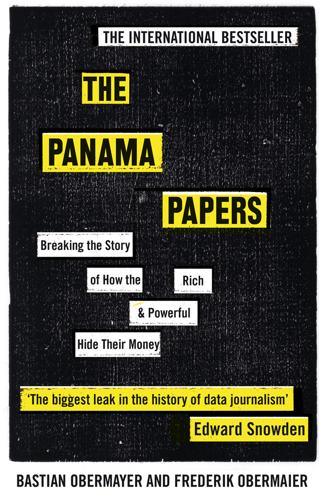
The Panama Papers: Breaking the Story of How the Rich and Powerful Hide Their Money
by
Frederik Obermaier
Published 17 Jun 2016
Whoever leaked these papers to me also spotted Roldugin’s name, and he or she is worried. Probably with good reason. [Obermayer]: Who are you? [john doe]: I’m no one. Just a concerned citizen. This is a clear reference to the whistle-blower Edward Snowden, who called himself ‘Citizen Four’ when he made contact with the journalist and filmmaker Laura Poitras. Snowden has been trapped in Moscow since fleeing from Hong Kong. [Obermayer]: Why are you doing this? [john doe]: I want you to report on the material and to make these crimes public. This story could rival the Snowden documents in importance but you’re publishing in German. You need to partner with the New York Times or a similar caliber English paper.
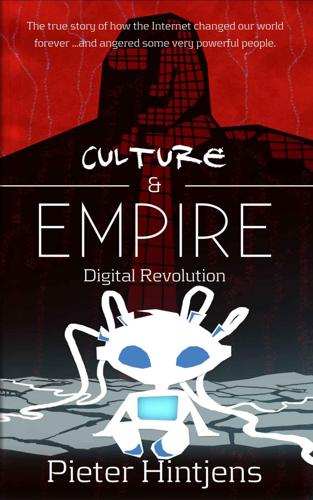
Culture & Empire: Digital Revolution
by
Pieter Hintjens
Published 11 Mar 2013
Other whistle blowers of note are Annie Machon, Gareth Williams, Russel Tice, Jeffrey Sterling, Stephen Jin-Woo Kim, Jesselyn Radack, Thomas Drake, Daniel Ellsberg, and William Binney. We then have the independent media who are willing to report these documents, at personal risk. There is Julian Assange, building wikileaks.org around Manning's leaks, and Glenn Greenwald and Laura Poitras, reporting in the Guardian on Edward Snowden's leaks. Again, heroic figures who have changed the course of history. We see academics like Dr Daniele Ganser, who know their history and are immune to this particular Narrative because they have seen so many like it. They look at events over the last twenty years and they see continuation of old patterns.
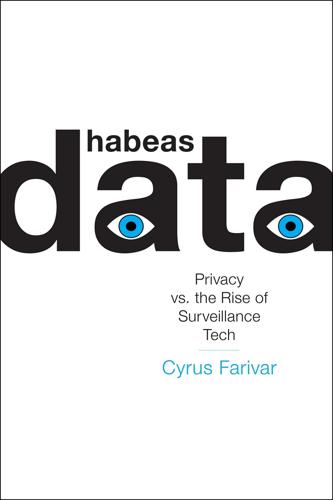
Habeas Data: Privacy vs. The Rise of Surveillance Tech
by
Cyrus Farivar
Published 7 May 2018
Google did not offer full-disk encryption on its Android devices either. However, everyone’s notion of security changed overnight when Edward Snowden became a household name in June 2013. Snowden, a young contractor for the NSA, leaked a trove of classified documents to two American reporters, Glenn Greenwald and Laura Poitras. (Greenwald famously almost missed the Snowden story as he found setting up encrypted e-mail too difficult.) They reported on a seemingly endless amount of materials from Snowden’s cache, describing in detail how the NSA was conducting its espionage and by what legal means. The net result was that all of a sudden journalists, activists, and even average citizens began taking these issues more seriously than ever before.
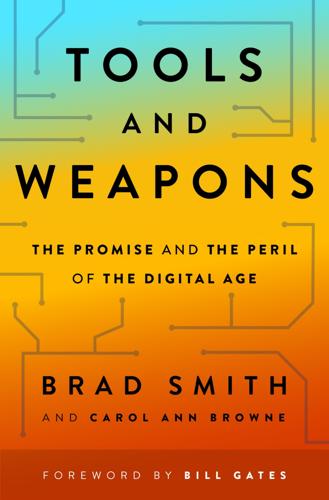
Tools and Weapons: The Promise and the Peril of the Digital Age
by
Brad Smith
and
Carol Ann Browne
Published 9 Sep 2019
Robert O’Harrow Jr., Ellen Nakashima, and Barton Gellman, “U.S., Company Officials: Internet Surveillance Does Not Indiscriminately Mine Data,” Washington Post, June 8, 2013, https://www.washingtonpost.com/world/national-security/us-company-officials-internet-surveillance-does-not-indiscriminately-mine-data/2013/06/08/5b3bb234-d07d-11e2-9f1a-1a7cdee20287_story.html?utm_term=.b5761610edb1. Back to note reference 4. Glenn Greenwald, Ewen MacAskill, and Laura Poitras, “Edward Snowden: The Whistleblower Behind the NSA Surveillance Revelations,” Guardian, June 11, 2013, https://www.theguardian.com/world/2013/jun/09/edward-snowden-nsa-whistleblower-surveillance. Back to note reference 5. Michael B. Kelley, “NSA: Snowden Stole 1.7 Million Classified Documents and Still Has Access to Most of Them,” Business Insider, December 13, 2013, https://www.businessinsider.com/how-many-docs-did-snowden-take-2013-12.
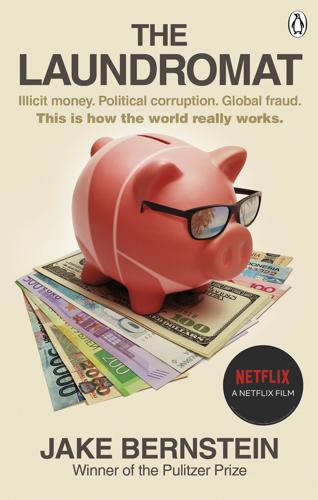
The Laundromat : Inside the Panama Papers, Illicit Money Networks, and the Global Elite
by
Jake Bernstein
Published 14 Oct 2019
David Ford to author, August 2017. 43 even surfaced in a Swiss newspaper: François Pilet and Marie Maurisse, “David Ford, L’homme de Washington,” L’Hebdo, February 12, 2015, https://francoispilet.net/david-ford-lhomme-de-washington/. 44 Somewhere in Geneva was a covert CIA listening post: Glenn Greenwald, Ewen MacAskill, and Laura Poitras, “Edward Snowden: The Whistleblower Behind the NSA Surveillance Revelations,” Guardian, June 11, 2013, https://www.theguardian.com/world/2013/jun/09/edward-snowden-nsa-whistleblower-surveillance. 45 By the end of 1953, they had devised a plan: Riggs Docs from CIA Reading Room—Secret Security Information, declassified, CIA Reading Room. 46 The island’s ruler, France-Albert René: “President Steps Down After 27 Years,” Los Angeles Times, April 15, 2004, http://articles.latimes.com/2004/apr/15/world/fg-briefs15.6. 47 fished the body of a Mafia soldier out of the swamps: The Association for Diplomatic Studies and Training Foreign Affairs Oral History Project, Ambassador David J.

Terms of Service: Social Media and the Price of Constant Connection
by
Jacob Silverman
Published 17 Mar 2015
“Top 5 Ways Bleacher Report Rules the World!” 129 “emerging culture of surveillance”: David Lyon. “The Culture of Surveillance: Who’s Watching Whom, Now?” Lecture, University of Sydney. March 1, 2012. sydney.edu.au/sydney_ideas/lectures/2012/professor_david_lyon.shtml. 129 “They quite literally”: Barton Gellman and Laura Poitras. “U.S., British Intelligence Mining Data from Nine U.S. Internet Companies in Broad Secret Program.” Washington Post. June 7, 2013. washingtonpost.com/investigations/us-intelligence-mining-data-from-nine-us-internet-companies-in-broad-secret-program/2013/06/06/3a0c0da8-cebf-11e2-8845-d970ccb04497_story.html. 130 Utah data center: James Bamford.
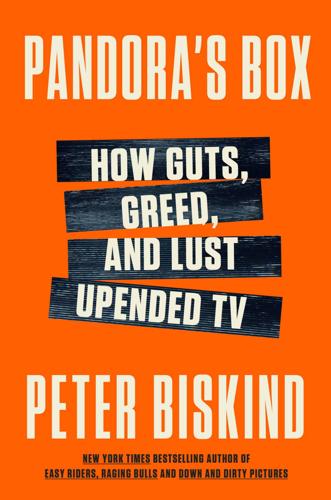
Pandora's Box: How Guts, Guile, and Greed Upended TV
by
Peter Biskind
Published 6 Nov 2023
“I gave my heart and soul to my work without anybody stepping on my toes. After Jeff Bewkes left it wasn’t the HBO that I loved anymore. Richard wanted celebrity [documentaries].” She, on the other hand, was making docs on freaks like Robert Durst (she commissioned The Jinx: The Life and Deaths of Robert Durst, which aired in 2015). She ordered up Laura Poitras’s award-winning Citizenfour, about Edward Snowden. According to one source, Plepler would say, “How old is she now?” As for Lombardo, she recalls, “He screamed at me. I couldn’t even have a discussion with him. He hated me.” Nevins continues, “I was stupid. I really didn’t get it. I would tell Richard that Mike was being brutal and nothing would happen.
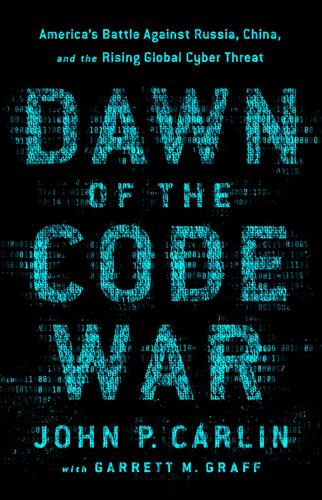
Dawn of the Code War: America's Battle Against Russia, China, and the Rising Global Cyber Threat
by
John P. Carlin
and
Garrett M. Graff
Published 15 Oct 2018
That report was the first of a trove of classified files leaked by a onetime NSA employee and contractor who had illegally downloaded thousands of files on Western surveillance programs from his workplace and then fled to China-controlled Hong Kong, where he handed over the files to journalists that included Glenn Greenwald, Laura Poitras, the New York Times, the Washington Post, and Der Spiegel. When his location in Hong Kong became public, Snowden fled to Russia, where he sought temporary asylum from Vladimir Putin. The subsequent weeks of public revelations about secret programs and Western surveillance operations caused an international uproar.

The Code: Silicon Valley and the Remaking of America
by
Margaret O'Mara
Published 8 Jul 2019
Nearly every other boldface tech name appeared in the cache of classified documents, but 98 percent of the data came from only three: Yahoo!, Google, and Microsoft. The NSA had been in the electronic surveillance business since its 1947 inception, but involvement of consumer tech’s biggest brands—including the “don’t be evil” empire of Page and Brin—precipitated a major scandal. See Barton Gellman and Laura Poitras, “U.S., British intelligence mining data from nine U.S. Internet companies in broad secret program,” The Washington Post, June 7, 2013, A1. 20. Nick Wingfield, “Amazon Reports Annual Net Profit for the First Time,” The Wall Street Journal, January 28, 2004; Ron Miller, “How AWS Came to Be,” TechCrunch, July 2, 2016; Jordan Novet, “Microsoft narrows Amazon’s lead in cloud, but the gap remains large,” CNBC, April 27, 2018. 21.
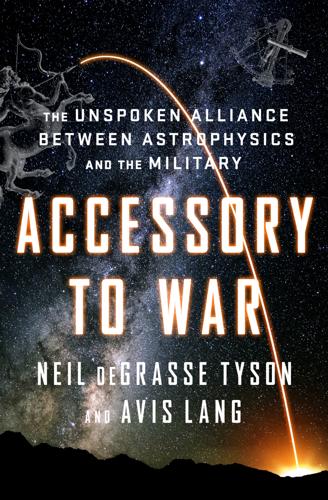
Accessory to War: The Unspoken Alliance Between Astrophysics and the Military
by
Neil Degrasse Tyson
and
Avis Lang
Published 10 Sep 2018
ACLU National Security Project, “National Security: What’s at Stake,” www.aclu.org/national-security. 19.National Security Agency/Central Security Service, www.nsa.gov; “Mission and Strategy,” www.nsa.gov/about/mission-strategy (accessed Apr. 10, 2017). In April 2016, the mission was expressed as “Global Cryptologic Dominance Through Responsive Presence and Network Advantage.” 20.Re Snowden, see, e.g., Citizenfour, documentary film (dir. Laura Poitras, 2014); video interviews by the New Yorker’s Jane Mayer (2014), www.youtube.com/watch?v=fidq3jow8bc; and Harvard Law School professor Lawrence Lessig (2014), www.youtube.com/watch?v=o_Sr96TFQQE (accessed Apr. 10, 2017). Following seven months of revelations and accusations by and against Snowden, a major US newspaper contended: “The shrill brigade of his critics say Mr.
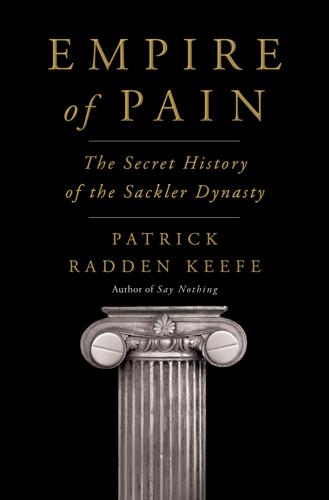
Empire of Pain: The Secret History of the Sackler Dynasty
by
Patrick Radden Keefe
Published 12 Apr 2021
At WME, I’m grateful to Tracy Fisher, Svetlana Katz, Matilda Forbes Watson, Eric Simonoff, Ben Davis, Anna DeRoy, and Christina Lee. I’m grateful also to Ravi Mirchandani and his colleagues at Picador. Thanks, for various reasons, to Rachel Aviv, Joel Lovell, Raffi Khatchadourian, Andrew Marantz, Henry Molofsky, David Grann, Tyler Foggatt, Micah Hauser, Victoria Beale, Phil Keefe, Jim Keefe, Laura Poitras, Daniel Gorman, Sravya Tadepalli, Sam Rosen, David De Jong, Naomi Fry, Nick Paumgarten, Bart Gellman, Tim Weiner, Paul DeMarco, Jennifer Kinsley, Paulina Rodríguez, Peter Smith, Pauline Peek, Scott Podolsky, David Juurlink, Andrew Kolodny, Ed Bisch, David Fein, David Segal, Larissa MacFarquhar, Jillian Fennimore, Evan Hughes, Lily Bullitt, Ed Conlon, Mark Rosenberg, Oriana Hawley, Mark Bomback, Andy Galker, Jason Burns, Dave Park, Noah Harpster, Micah Fitzerman-Blue, Will Hettinger, Eric Newman, Alex Gibney, Svetlana Zill, John Jordan, Jed Lipinski, Mike Quinn, Sarah Margon, Sarah Stillman, Ed Caesar, Sheelah Kolhatkar, Ben Taub, Gideon Lewis-Kraus, Sai Sriskandarajah, and “the Michaels,” as my kids call them: Michael Wahid Hanna and Michael Shtender-Auerbach.
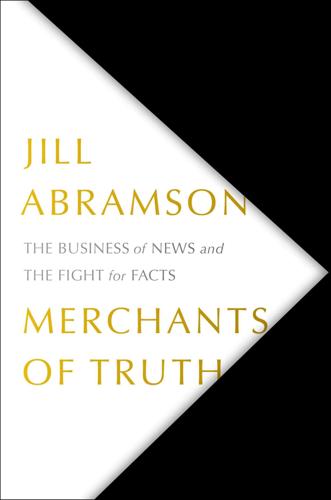
Merchants of Truth: The Business of News and the Fight for Facts
by
Jill Abramson
Published 5 Feb 2019
He had a source at the NSA who wanted the world to know about his agency’s secret use of widespread domestic spying, aided by most major tech companies, which had been turning over private communications to the government. It was on a scale no one imagined. Gellman’s source, who turned out to be Snowden, had decided not to take his stolen documents to the New York Times, having seen them hold their earlier NSA story so long. Through filmmaker Laura Poitras, a national security expert, Snowden had also approached the Guardian, the British paper that had published Wikileaks. Gellman wanted institutional backing in the U.S., and it made sense to bring the story to his former employer. Baron had been at the Post only a few months when Gellman handed him the kind of story editors dream of.

The Stack: On Software and Sovereignty
by
Benjamin H. Bratton
Published 19 Feb 2016
Andy Greenberg, “How a ‘Deviant’ Philosopher Built Palantir, a CIA-Funded Data-Mining Juggernaut,” Forbes, August 14, 2014, http://www.forbes.com/sites/andygreenberg/2013/08/14/agent-of-intelligence-how-a-deviant-philosopher-built-palantir-a-cia-funded-data-mining-juggernaut/2/. 21. Jacob Appelbaum, Laura Poitras, and Trevor Paglen, “Art as Evidence” (panel at Transmediale, Haus Der Kulturen Der Welt, Berlin, 2014), http://www.transmediale.de/content/presentation-by-jacob-applebaum-at-transmediale-2014-keynote-art-as-evidence. 22. See https://www.youtube.com/watch?v=ZJ6BuHL0EiQ. Thanks to Serene Han, programmer at Google Ideas, for helping me understand the uProxy technology. 23.